Mastering Mountain Climbing Kilimanjaro: Essential Tips & Insights
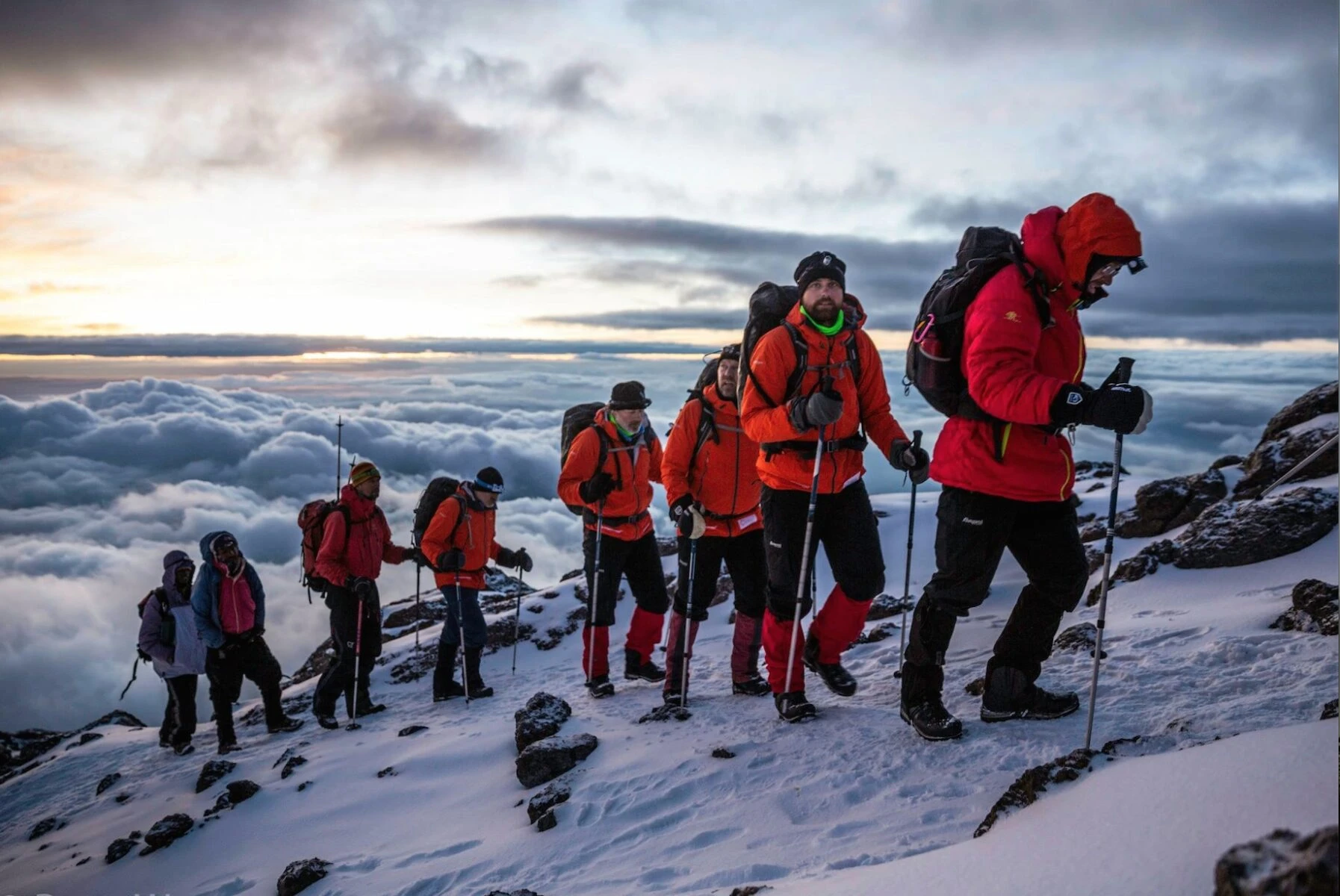
Mount Kilimanjaro, Africa’s highest and most iconic summit, beckons adventurers with its promise of grandeur and challenge. From the lush, whispering rainforests to the icy, wind-swept heights of Uhuru Peak, every inch of Kilimanjaro is a realm of wonder.
This article serves as the ultimate guide to conquering this legendary giant. It provides a comprehensive roadmap for navigating its diverse terrains and reaching its awe-inspiring summit and highlights essential tips for selecting the best route, preparing your body, and understanding the specialized gear you’ll need to turn this monumental climb into an unforgettable triumph.
Let Us Elevate Your Kilimanjaro Safari!
At Kenya Luxury Safaris, we’ve earned our reputation as the best in luxury travel by offering meticulously crafted, tailor-made safari experiences that capture the essence of Africa. Now, we’re thrilled to bring our expertise to Tanzania, including adventures to the iconic Mount Kilimanjaro. Our exceptional service and personalized itineraries promise to turn your climb of Africa’s highest peak into an extraordinary journey, blending adventure with unparalleled comfort and attention to detail.
Executive Summary
This article;
- Provides essential information for climbing Mount Kilimanjaro, including route options, the best times to climb, necessary gear, and physical preparation needed for a successful ascent.
- Covers popular Kilimanjaro routes such as Marangu, Machame, and Lemosho, outlining their features, challenges, and benefits, helping climbers choose the best route for their experience and goals.
- Offers practical advice on preparing physically for the climb, essential gear and equipment, and how to handle altitude sickness.
- Highlights post-climb activities, including safaris in Ngorongoro Crater and Serengeti National Park, relaxing on Zanzibar’s beaches, and exploring local culture, providing options for a well-rounded African adventure.
Video Overview: Mountain Climbing Kilimanjaro
Understanding Mount Kilimanjaro, the Roof of Africa
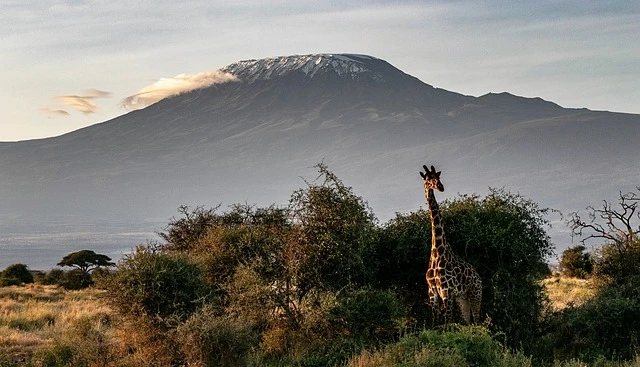
Located in northern Tanzania, East Africa, Mt Kilimanjaro is a wonder of nature and a magnet for climbers worldwide. Famous for being the tallest peak in Africa, it’s part of the prestigious Seven Summits, which represent the highest mountains on the continent. Unlike many other peaks, Kilimanjaro is a free-standing stratovolcano, meaning it isn’t part of a mountain range, which adds to its majestic appeal.
The mountain is approximately 5,895 meters (19,340 feet) tall and is composed of three volcanic cones: Kibo, Mawenzi, and Shira. While Mawenzi and Shira are extinct, Kibo, the highest cone, is dormant and could potentially erupt again. The highest point on Kibo’s crater rim is known as Uhuru Peak, a Swahili word meaning ‘freedom’. This peak is the ultimate goal for many climbers who embark on this challenging journey.
Another fun fact is that Kilimanjaro was named a UNESCO World Heritage site in 1987 due to its unique ecological and geological features. The mountain’s diverse climate zones, from lush rainforests to arctic conditions at the summit, make it a microcosm of the world’s environments. It’s no wonder that climbing Mount Kilimanjaro is considered one of the most rewarding experiences for adventure enthusiasts.
Getting to Kilimanjaro
Your journey to climb Kilimanjaro begins at Kilimanjaro International Airport (northern Tanzania), the main gateway for climbers. This airport is well-connected with flights from major cities like Amsterdam, Istanbul, and Addis Ababa, making it accessible from various global destinations. Upon arrival, you can hire a taxi or arrange for a shuttle to transport you to Moshi or Arusha, the closest towns to Mount Kilimanjaro. These towns serve as the starting points for many Kilimanjaro routes and offer a range of accommodations to suit your needs.
Hotel accommodation before and after the climb is typically part of the package arranged by your Kilimanjaro tour operator. This ensures you have a comfortable place to rest and prepare before your ascent and recover after your descent.
Best Time to Climb Kilimanjaro
A successful and enjoyable trek up Kilimanjaro largely depends on when you choose to climb. The optimal periods are during the dry seasons, specifically from July to October and December to February. During these months, the weather conditions are more favorable, with clearer skies and less rainfall, making the trails more manageable.
Additionally, the dry seasons offer better visibility, allowing trekkers to enjoy breathtaking views of the surrounding landscapes and summit. The absence of heavy rainfall also reduces the risk of muddy and slippery trails, making the climb safer and more comfortable.
However, these months are also the busiest times on Kilimanjaro, with many climbers aiming to take advantage of the optimal conditions. To avoid the crowds, consider starting your trek on a weekday or opting for a less popular route like the Rongai or Shira routes.
For those who prefer a quieter experience, climbing during the rainy seasons—March to June or November—can be an option. While the weather may be more unpredictable, with occasional showers and cloud cover, the trails are less crowded, offering a more serene and intimate adventure. Proper preparation, including waterproof gear and a flexible itinerary, is crucial if you choose to climb during these times.
Ultimately, choosing the best time to climb Kilimanjaro depends on your personal preferences for weather, crowd levels, and the overall experience you seek.
Choosing Your Kilimanjaro Route
The route you select for your Kilimanjaro climb will greatly influence your overall experience and probability of success. There are seven routes to climb Mount Kilimanjaro, each offering unique landscapes, challenges, and acclimatization opportunities. Your choice will depend on your fitness level, previous hiking experience, and the kind of adventure you seek.
The different routes to climb Mount Kilimanjaro include:
- The Northern Circuit: the newest and offers the highest success rate due to excellent acclimatization opportunities
- The Umbwe Route: the shortest, steepest, and most challenging, with one of the lowest success rates
- The Rongai Route: quieter and more remote, providing a unique experience with less rainfall and potential wildlife sightings. Opting for a route like Rongai, which is on the drier side of the mountain, can be beneficial during the rainy season when other routes might be more treacherous due to increased rainfall
In the following subsections, we’ll delve into three of the most popular routes: Marangu, Machame, and Lemosho.
Marangu Route

The Marangu Route, often referred to as the “Coca-Cola” route, is one of the most popular and easiest ways to climb Kilimanjaro. Spanning 70 kilometers, it typically takes 5-6 days to complete. This route is unique as it offers accommodation in rustic huts rather than tents, providing a more comfortable and sheltered experience, especially during inclement weather.
Despite being considered easier, the Marangu Route has a lower success rate due to its rapid ascent, which gives climbers less time to acclimatize. Nevertheless, it remains a favorite for those seeking a shorter and more straightforward trek to the summit of Kilimanjaro.
Machame Route
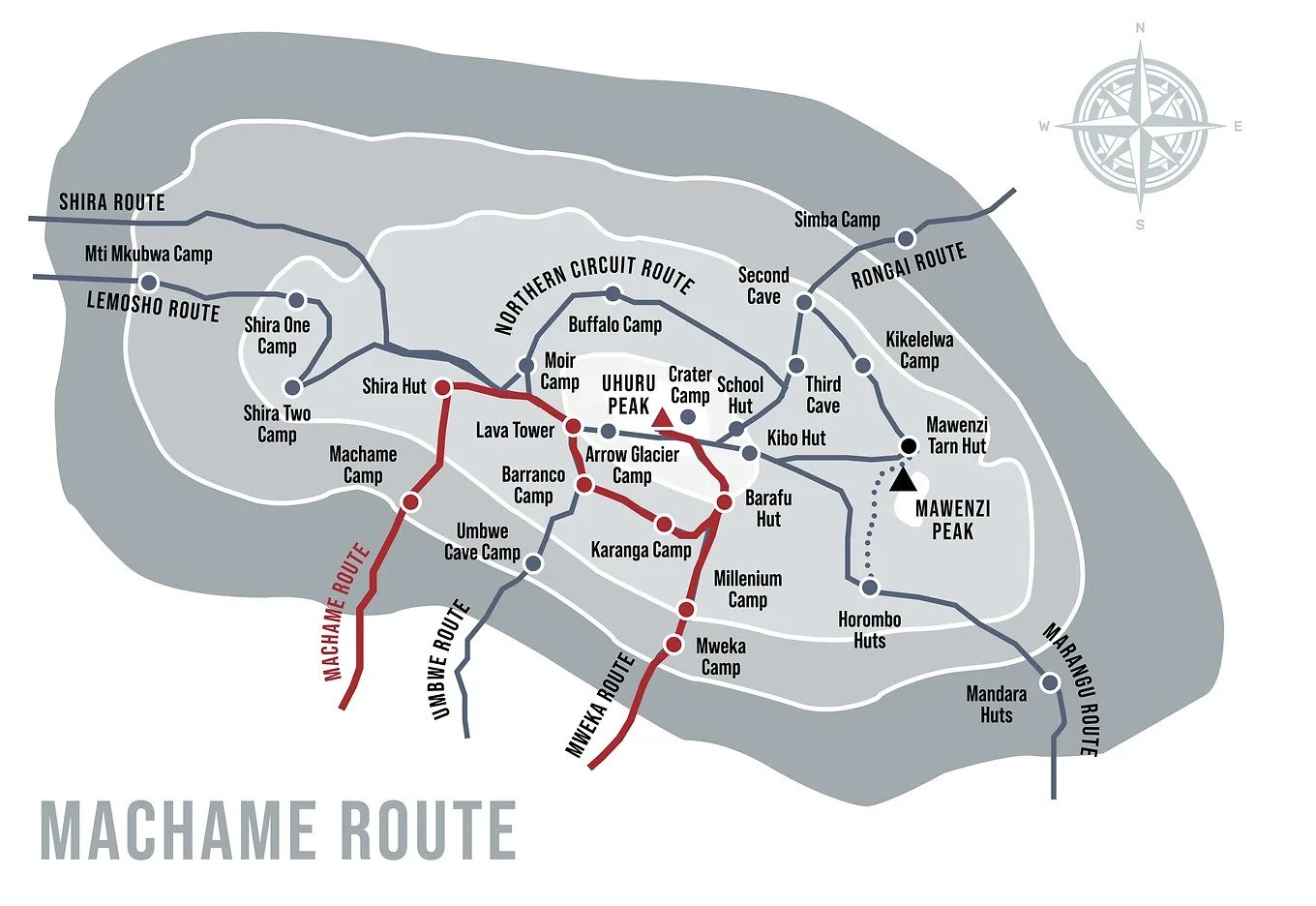
Known as the “Whiskey” route, the Machame Route is renowned for its scenic beauty and varying landscapes. This route offers excellent acclimatization opportunities due to its “climb high, sleep low” design, which helps climbers adjust to the altitude more effectively. The Machame Route typically takes 6-7 days to complete, providing ample time for acclimatization and increasing the chances of reaching the summit.
Climbers on this route will traverse through a variety of stunning environments, from lush rainforests to alpine deserts. This visual diversity, combined with the route’s gradual ascent, makes it a favorite among climbers seeking both a challenging and picturesque journey to the top.
Lemosho Route
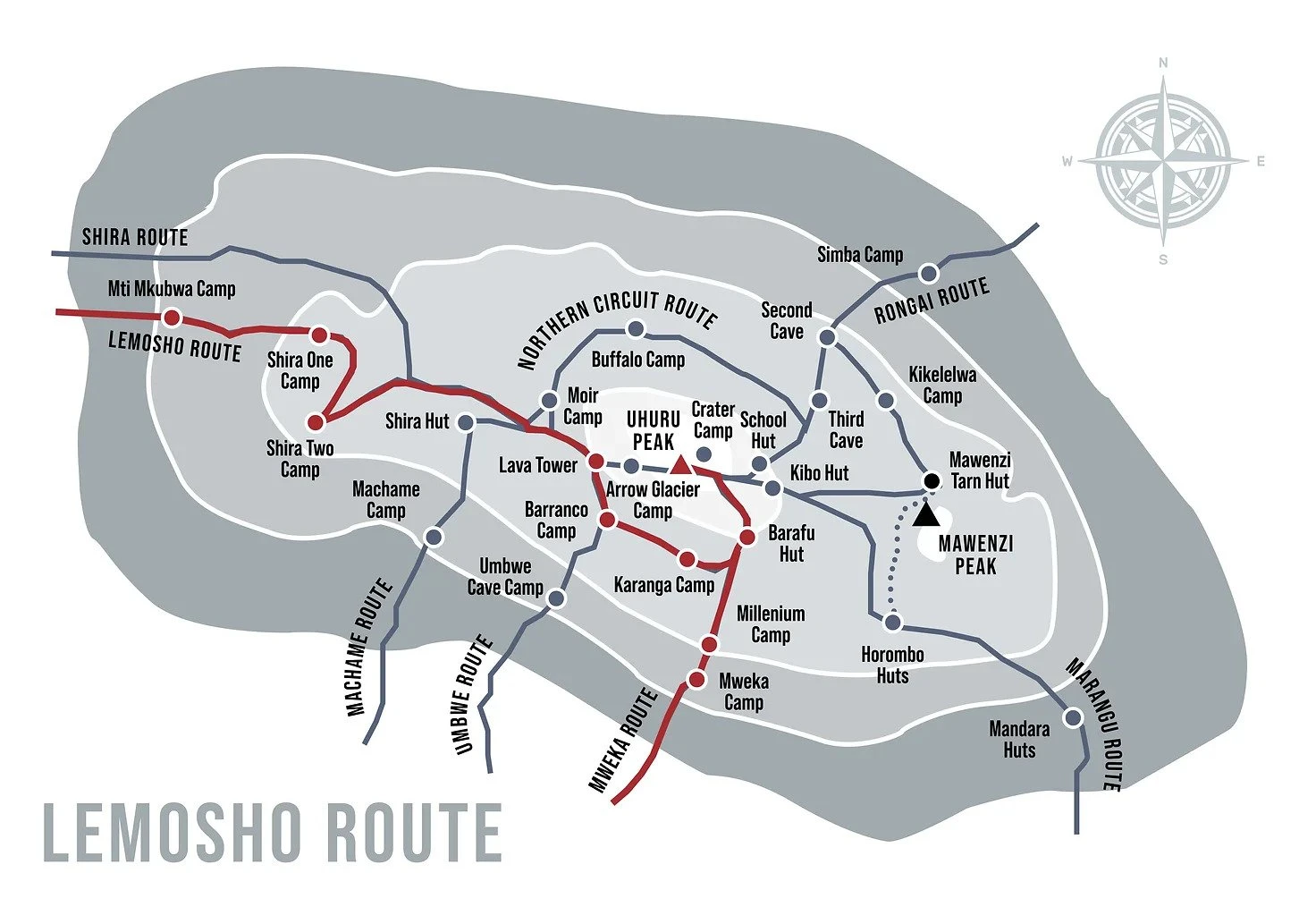
The Lemosho Route is celebrated for its breathtaking scenery and lower crowd levels compared to other routes. Spanning 67 kilometers, it typically takes 7-8 days to complete, offering excellent acclimatization benefits for trekkers. Starting from the western side of the mountain, the route takes you through the lush rainforest, across the stunning Shira Plateau before eventually joining the Machame Route.
This route is ideal for those looking to enjoy a quieter and more serene trekking experience, with stunning vistas and diverse landscapes along the way. The extended duration and gradual ascent also make it one of the preferred routes for rock climbing.
Physical Preparation for Climbing Kilimanjaro
To ensure a safe and successful trek, it’s vital to prepare physically for climbing Kilimanjaro. While the climb is not technically challenging, the high altitude and varying terrain make it physically demanding. A reasonable degree of fitness is sufficient for most people who have climbed Kilimanjaro, but specific training can significantly enhance your experience.
To prepare for a climb, it is important to focus on both cardiovascular exercises and strength training. Here are some exercises that will help you get ready:
- Cardiovascular exercises such as running, cycling, and gym classes help improve lung capacity and overall stamina.
- Strength training, particularly focusing on the legs and core, is crucial. Exercises like squats, lunges, and planks will prepare your muscles for the rigors of hiking.
- Hiking on hills with a backpack for several months before the climb will help you get used to the weight and build the necessary endurance.
- Regular practice walks, ideally 4-6 hours long, spent walking in the boots you’ll use on Kilimanjaro, will help prevent blisters and get your body accustomed to prolonged periods on your feet. Aim to do these extended practice walks at least every two to three weeks in the months leading up to the climb.
With proper preparation, even beginners can successfully climb Kilimanjaro and enjoy the adventure.
Essential Gear and Equipment
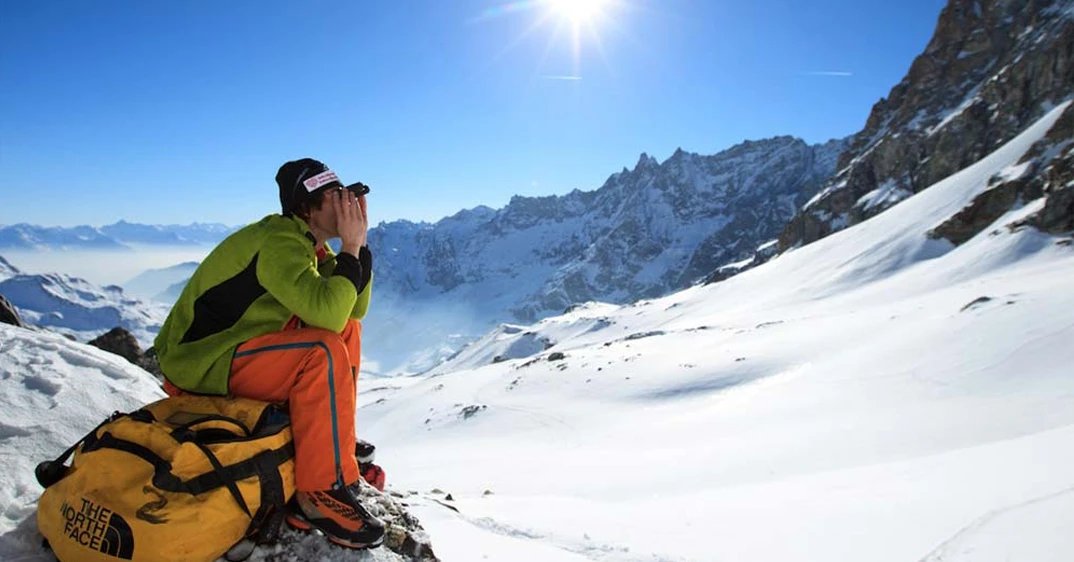
For a successful Kilimanjaro trek, it’s imperative to have the right gear and equipment. The weather on the mountain can be unpredictable, and temperatures can vary significantly. Proper clothing layers are essential to handle these conditions, including:
- Waterproof and windproof jackets and trousers made of breathable materials like Gore-Tex
- A down jacket or thick fleece for summit night and cold nights
- Quick-dry walking trousers and shorts for the warmer days
Footwear is equally important. Good quality leather walking boots with proper ankle support and a stiff midsole will keep your feet dry and comfortable. Trekking socks, especially those with a woolen mix, will help keep your feet warm and dry.
For sleeping, a 3-season bag is generally sufficient for warmer months, while a 4-season option or a 3-season one paired with a fleece liner is better suited for colder months.
Other essential gear includes:
- A main rucksack or duffle bag of 70 liters for carrying your gear
- Trekking poles
- A head torch with spare batteries
- A small power pack with USB cables
- A day pack of 30-40 liters is necessary for daily necessities like water bottles and spare layers.
Proper hydration and nutrition are also crucial, so carry adequate water and high-energy snacks like cereal bars and energy gels. These preparations will ensure you’re well-equipped for the challenges ahead.
Altitude Sickness and Acclimatization
Altitude sickness is a common concern when climbing Kilimanjaro, as most climbers will experience Acute Mountain Sickness (AMS) above 3,000 meters. This occurs because the body struggles to operate on less oxygen at higher elevations. Symptoms of AMS include:
- headaches
- fitful sleep
- vivid dreams
- fatigue
- dizziness
- loss of appetite
- nausea
- muscle aches
Proper acclimatization is vital in preventing altitude sickness. Here are some tips to help you acclimatize effectively:
- Climb high each day and sleep at lower altitudes, allowing your body to adjust gradually.
- Stay hydrated and drink plenty of water.
- Take frequent breaks during your climb to rest and catch your breath.
- Consider using medications like acetazolamide (Diamox) to help mitigate symptoms.
- It is recommended to spend a minimum of seven days acclimatizing before climbing Kilimanjaro.
In severe cases of altitude sickness, immediate descent is crucial. It’s important to listen to your body and not push beyond your limits. With proper acclimatization and awareness of the symptoms, you can reduce the risks and increase your chances of reaching the summit safely.
What to Expect Each Day
A typical day on a Mount Kilimanjaro trek includes:
- Wake-up call around 6 am
- Breakfast and packing your gear
- Hiking usually begins around 8 am
- Hiking continues for 4-8 hours, depending on the route and itinerary
- Each day covers approximately 3-10 miles
- Lunch break around midday to rest and refill water bottles
After the lunch break, hiking resumes until you reach the next campsite in the late afternoon. Dinner is typically served around 6:30 pm in a communal dining area, followed by optional activities such as stargazing or lectures on Kilimanjaro’s history. The routine helps maintain a steady pace and ensures you get enough rest and nourishment to tackle the next day’s challenges.
The Final Push to the Summit
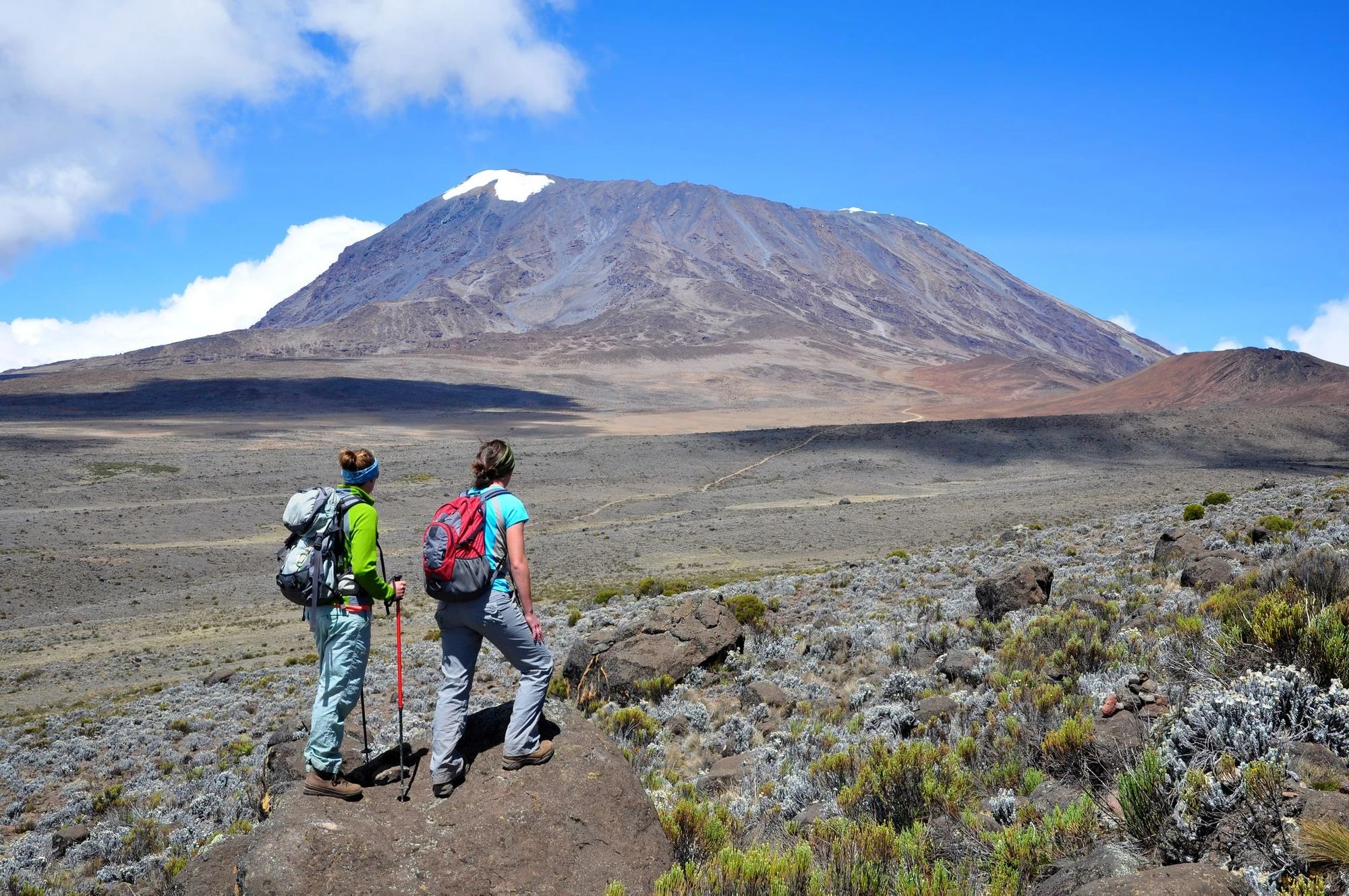
The final push to the Mount Kilimanjaro summit is both the most challenging and rewarding part of the Kilimanjaro climb. Summit night starts with waking up around 11 pm and preparing for the ascent, which begins at midnight. Proper temperature regulation is crucial during this time to conserve energy. Use stops effectively for clothing adjustments, eating, and drinking.
By daybreak, climbers typically reach the crater rim, where stunning sunrise views over Mawenzi await. From there, it takes an additional 1-2 hours to reach Uhuru Peak. After reaching the summit, the descent to Barafu Camp for lunch follows before continuing to the final camp. This arduous journey is a true test of endurance and determination, but the sense of achievement at the summit makes it all worthwhile.
Safety Considerations
When climbing Mount Kilimanjaro, safety should be your top priority. All trekkers must be accompanied by a registered and licensed guide to ensure adherence to park regulations and overall safety during their Kilimanjaro treks. Choosing reputable trekking companies with experienced guides significantly enhances safety while climbing Mount Kilimanjaro. These guides are trained in first aid and carry medical kits for emergencies, ensuring that climbers are well taken care of in case of any health issues.
Health and emergency preparedness should be a priority. Trekkers should carry a first aid kit with personal medications, altitude sickness drugs like Diamox, and oral rehydration sachets. The weather on Kilimanjaro can be unpredictable, with high winds and sub-zero temperatures, necessitating appropriate gear and preparation.
Most importantly, be aware that while Kilimanjaro is not considered dangerous relative to other high peaks, the risk of acute mountain sickness (AMS) is real, and around 10 fatalities occur each year due to AMS.
Cost of Climbing Kilimanjaro
So how much does it cost to climb Kilimanjaro? Well, several factors influence the cost of climbing Kilimanjaro, such as the chosen route, trek duration, and the tour operator’s quality. In 2023, tour operator fees ranged from $2,450 to $2,999, with the average cost around £2,650. These costs typically include Kilimanjaro National Park fees, climbing permits, and rescue fees.
Park entrance fees alone range from £600 to £800, covering the conservation fee, campsite fees, and rescue fee. Additional expenses to consider include travel insurance, personal hiking gear, and potential extra days on the mountain, which can cost around $255 per day. It’s crucial to avoid opting for the cheapest trekking guide, as you pay for experience, proper equipment, and a safe time frame.
Life at Camp
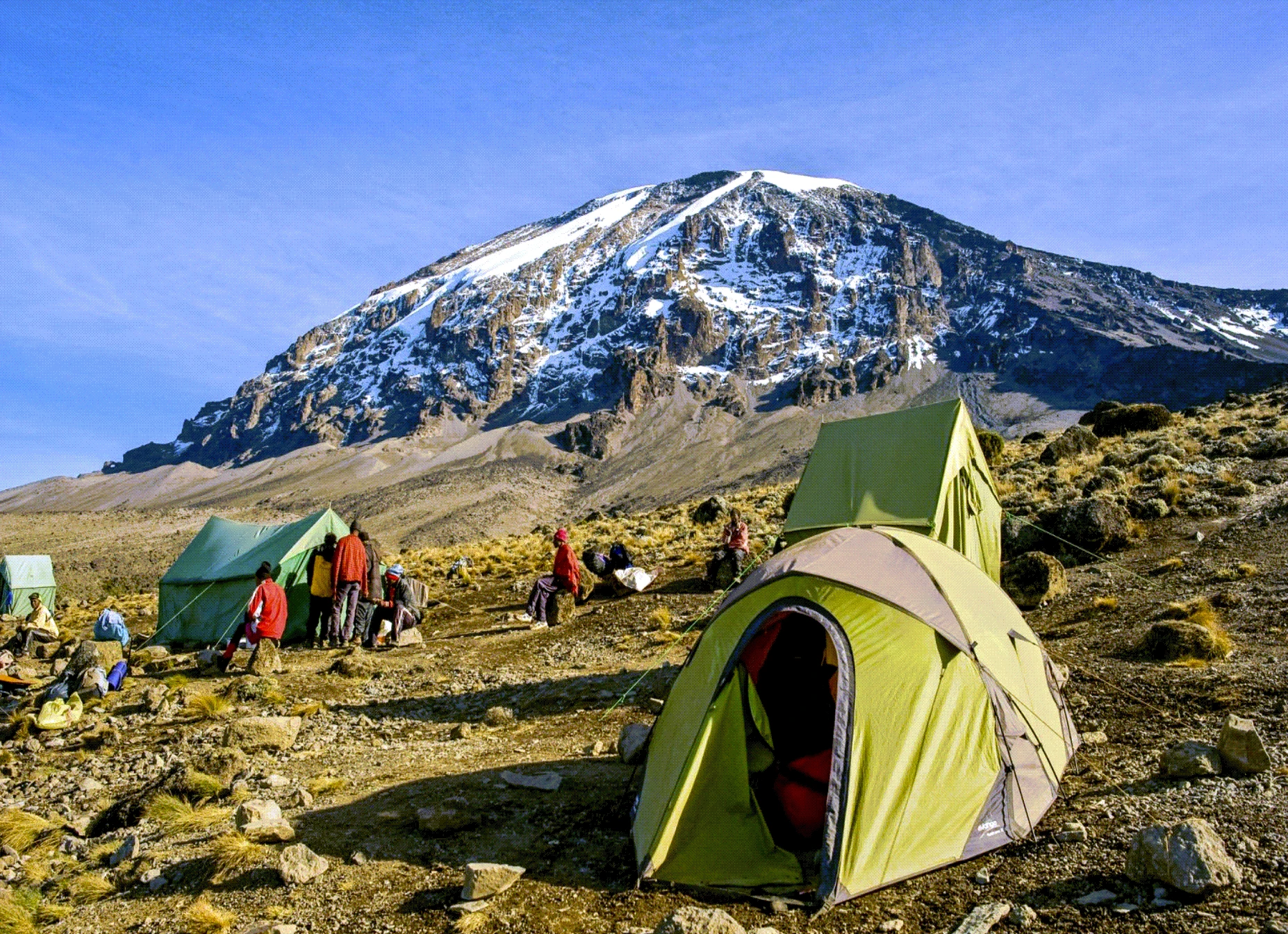
Life at camp on Kilimanjaro is a unique and communal experience. The staff will be responsible for carrying the main bag, tents, kitchen equipment, food, fuel, tables, and chairs. This will enable the climbers to concentrate solely on the trek. Sleeping in tents is standard, and it’s advisable to get accustomed to this before the trip to ensure comfort and good rest on the mountain. Staying organized in your tent can enhance comfort and contribute to a successful climb.
You will be provided with:
- Meals, including breakfast, lunch, and dinner, with an emphasis on serving hot meals whenever possible. Food can range from Western-style dishes to local foods like ugali and cabbage.
- Personal items such as toothbrush, travel-size toothpaste, biodegradable soap, and hand sanitizer gel for hygiene.
- Public toilets are available at each campsite, but many climbers prefer private portable toilets for added comfort.
- There are no showers on the camping routes, so climbers use wet wipes or rinse off with supplied water to maintain hygiene.
The Unique Flora and Fauna of Kilimanjaro
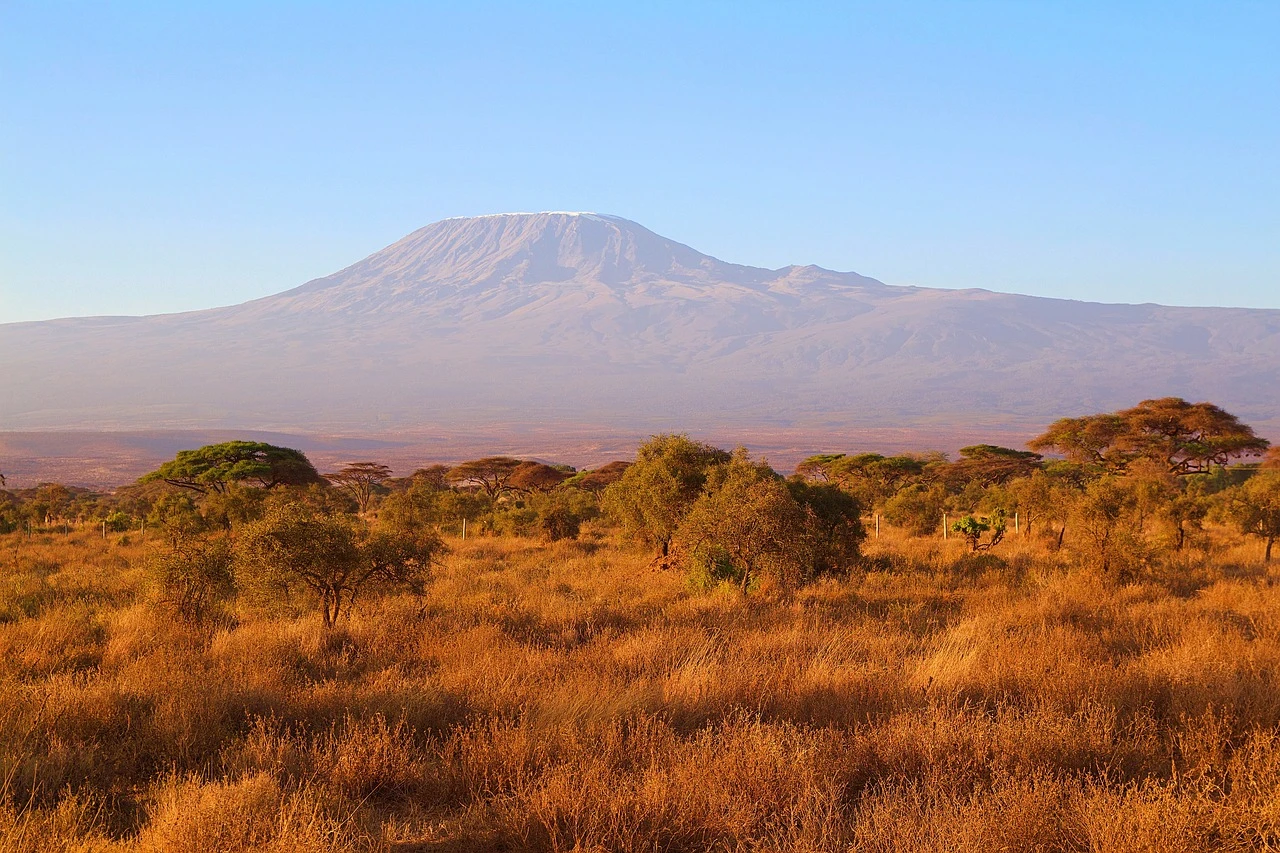
The Kilimanjaro region boasts five distinct ecological zones, each with unique flora and fauna. The bushland zone, ranging from 800 to 1800 meters, includes villages, farms, and grasslands. As you ascend, you’ll enter the rainforest zone between 1800 to 2800 meters, which receives significant rainfall and houses plants like tree ferns, sycamore trees, and mosses such as ‘old man’s beard’. This zone is also home to diverse bird species and primates, including blue monkeys and colobus monkeys.
Above 2800 meters lies the semi-alpine heath and moorland zone, featuring unique plants like giant groundsels and colorful red hot pokers. The alpine desert zone, starting at 4000 meters, has extreme temperature variations and limited vegetation, with only hardy plants like everlastings and yellow daisies surviving. Finally, the arctic zone at 5000 meters is characterized by rock, ice, and slowly growing lichens.
This diverse range of ecological zones makes Kilimanjaro a fascinating microcosm of the world’s environments.
Post-Climb Activities
After the challenging climb, many adventurers look forward to relaxing and exploring Tanzania’s other attractions. A popular post-climb activity is going on a safari to:
- Ngorongoro Crater, home to 25,000 large mammals, including the rare black rhinos
- Serengeti National Park, famous for its annual wildebeest migration
- Tarangire National Park, known for its large elephant population
For those looking for a shorter safari experience, a four-day trip to Ngorongoro Crater and two other parks is a great option.
Another favorite is unwinding on the beautiful beaches of Zanzibar. Here, you can enjoy boat trips, snorkeling, and the serene ocean views. Exploring Moshi offers a chance to immerse yourself in Tanzanian culture, visit local markets, and savor fresh coffee from regional farms.
For a soothing end to your adventure, a visit to the hot springs of Kikuletwa, known as Chemka Hot Springs, is perfect for relaxing tired limbs after the climb.
Summary
Hiking up Mount Kilimanjaro is a remarkable journey that requires careful planning and preparation. From choosing the right route and physical training to understanding the importance of acclimatization and having the essential gear, every step is crucial for a successful ascent. With the highest free-standing mountain in the world as your goal, the sense of accomplishment upon reaching Uhuru Peak is unparalleled.
This guide has provided you with comprehensive advice to help you prepare for this incredible adventure. Remember, the climb is as much about the journey as it is about reaching the summit. Embrace the challenges, savor the breathtaking landscapes, and cherish the camaraderie of fellow climbers. Whether you’re an experienced hiker or a beginner, climbing Kilimanjaro will undoubtedly be one of the most rewarding experiences of your life.
Frequently Asked Questions
Which other mountains in East Africa are good for climbing?
East Africa is home to several impressive mountains that offer great climbing experiences. Apart from Kilimanjaro, Mount Kenya in Kenya is a popular choice, known for its challenging technical routes and stunning scenery. It’s the second-highest mountain in Africa and offers a variety of climbing experiences, from trekking to technical climbing.
Another option is Mount Meru in Tanzania, which provides a less crowded alternative to Kilimanjaro with equally rewarding views and diverse wildlife. The Rwenzori Mountains, located on the border between Uganda and the Democratic Republic of Congo, are also worth considering. Known as the “Mountains of the Moon,” they offer a unique climbing experience with diverse ecosystems and glaciers.
What are the main routes to climb Kilimanjaro?
The main routes to climb Kilimanjaro are the Marangu, Machame, Lemosho, Northern Circuit, Rongai, Shira, and Umbwe routes. Each route offers different levels of difficulty, scenery, and acclimatization opportunities, so you can choose the one that best fits your preferences.
How do I prevent altitude sickness while climbing Kilimanjaro?
To prevent altitude sickness while climbing Kilimanjaro, acclimatize slowly, stay hydrated, take frequent breaks, and consider using medications like acetazolamide (Diamox). Proper acclimatization involves climbing high each day and sleeping at lower altitudes. This will help your body adjust to the altitude and reduce the risk of altitude sickness.
What gear is essential for climbing Kilimanjaro?
The essential gear for climbing Kilimanjaro includes layered clothing, good quality walking boots, a 3- or 4-season sleeping bag, trekking poles, a head torch, and a day pack. Proper hydration and high-energy snacks are also crucial for the climb.
What activities can I do after climbing Kilimanjaro?
After climbing Kilimanjaro, you can enjoy activities such as going on a safari to Ngorongoro Crater, relaxing on Zanzibar’s beaches, exploring Moshi, and visiting the hot springs of Kikuletwa. There are plenty of exciting options to unwind and explore after your amazing feat!
Which is Harder Kilimanjaro or Everest Base Camp
Kilimanjaro is generally considered harder due to its higher altitude and steeper ascent, involving a challenging technical climb. The climb involves a longer trek and extreme altitude challenges. Everest Base Camp is physically demanding but involves less altitude gain. Kilimanjaro’s difficulty often lies in its steep, prolonged climb and altitude effects.
Which is Higher Kilimanjaro or Mount Everest?
Mount Everest is higher than Kilimanjaro. Everest’s peak stands at 8,848 meters (29,029 feet) above sea level, while Kilimanjaro reaches 5,895 meters (19,341 feet). Everest is the highest mountain in the world, while Kilimanjaro is the tallest free-standing mountain. The significant altitude difference makes Everest substantially higher.
How Long Will It Take to Reach the Summit of Kilimanjaro?
Reaching the summit of Kilimanjaro typically takes about 5 to 9 days, depending on the chosen route and acclimatization. The trek involves ascending from base camp to the summit, usually requiring several days for proper acclimatization. The extra days help minimize altitude sickness and increase the chances of a successful summit. The exact duration can vary based on the climber’s pace and weather conditions.
